If movement (expansion and/or contraction) is restricted within a young concrete element, tensile stresses will develop which will lead to cracking. This restriction to movement is normally referred to as restraint. Restraints may be internal or external to the element. Internal restraint occurs due to differential temperature changes within a mass concrete element and can cause surface and/or internal cracking. However, it is only significant in very thick sections (1000 mm or more). Internal restraints are not considered in this article.
External restraints are due to the support/casting condition of the concrete. However, external restraints take two basic forms;
(1) End restraints
(2) Edge restraints
End restraint
End restraints occurs when the edges of a young concrete are prevented from movement (see Figure below). This typically occurs in suspended slab cast between rigid cores, walls or columns, in infill bays, ground slab cast on piles, large area ground slabs restrained locally, e.g. by piles, columns or column foundations or by a build up of friction, walls cast against secant, contiguous concrete or steel sheet piled walls etc (CIRIA C660).
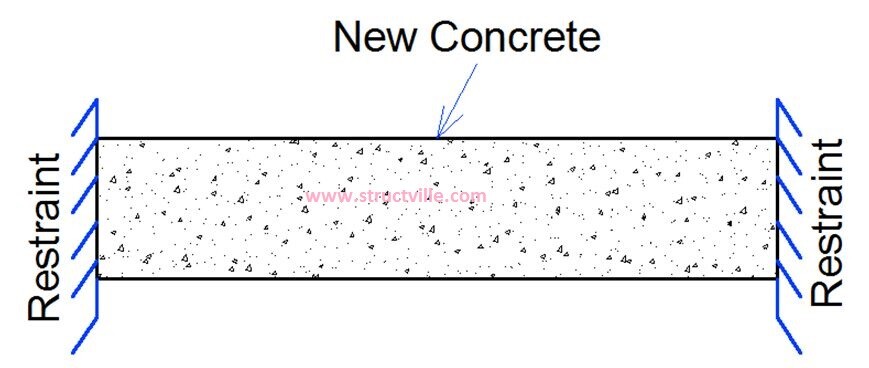
Edge restraint
This typically occurs where the young concrete section (say a wall) is cast on a hardened concrete base (see Figure below). This means that restriction is only in one direction, and there is interaction between the old and new concrete in terms of distribution of cracks. Edge restraint is different from end restraint because the crack width is a function of restrained strain rather than the tensile capacity of the concrete.
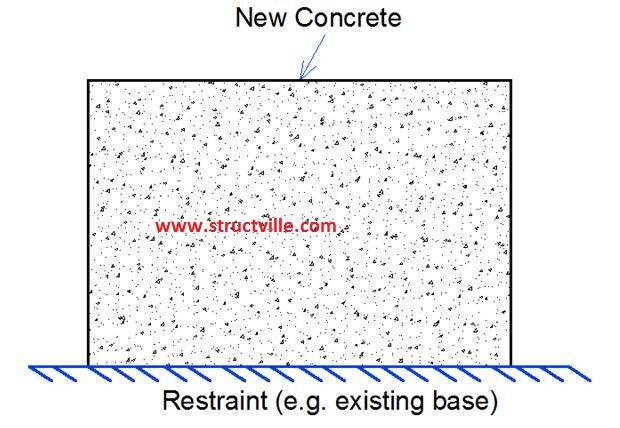
In some cases also, there can be combination of end restraint and edge restraint.
Restraint Factors
The level of restraint in a young concrete imposed by adjoining element is commonly described using restraint factors. The degree of restraint, R, is generally defined as the ratio between the actual stress in a contracting body and the stress imposed under full restraint.
Degree of restraint R = Actual imposed stress / Imposed stress at full restraint
It is recognised that is difficult to determine the degree of restraint correctly, but it is important to obtain restraint factors that are as accurate as possible. According to CIRIA C660, the restraint factors given by BS 8110-2 and HA BD 28/87 reflects true restraint values, while the restraint factors from BS 8007 and EN 1992-3 has a modification factor of 0.5 to account for creep under sustained loading.
ACI (1990) (cited by CIRIA C660) developed method for estimating edge restraint based on the relative geometry and stiffness of the old and new concrete. The equation is given by;
Restraint at the joint Rj = 1/(1 + AnEn/AoEo)
Where;
An is Cross-sectional area of the new (restrained) pour
Ao is the cross-sectional area of the old concrete
En is the modulus of elasticity of the new pour concrete
Eo is the modulus of elasticity of the old concrete
However, CIRIA C660 identified that the relative areas of influence of Ao and An may be difficult to define. Therefore the following simple rules were recommended;
- For a wall cast at the edge of a slab (An/Ao) = (hn/ho) (thickness of new concrete/thickness of old concrete)
- For wall cast remote from the edge of the slab (An/Ao) = (hn/2ho)
- En/Eo ranges from 0.7 to 0.8 (but 0.8 is recommended)
Based on CIRIA C660, the values in Table 1 can be used for edge restraint based on An/Ao or An/2Ao ratio.
Table 1: Values of Edge Restraint Factors (According to CIRIA C660)

The values of restraint factors for different conditions as given by different codes is summarised in the Table 2.
Table 2: Values of Restraint Factors (BS 8110-2 and EN 1992-3)

Thank you very much for reading.
Get this publication below for a cheap price by clicking on the image. It goes a long way in supporting what we do here at Structville. To read about the publication, click HERE. Thank you for your kind consideration.
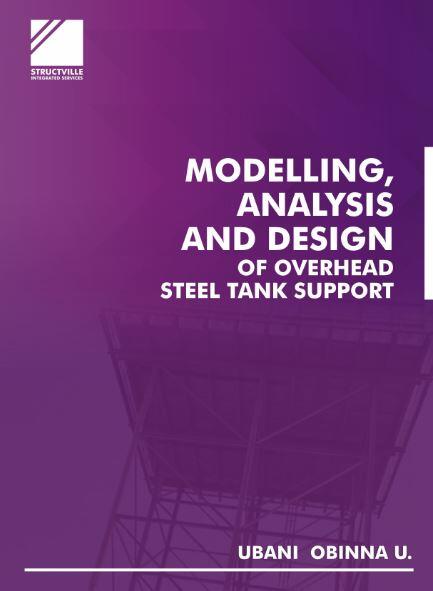

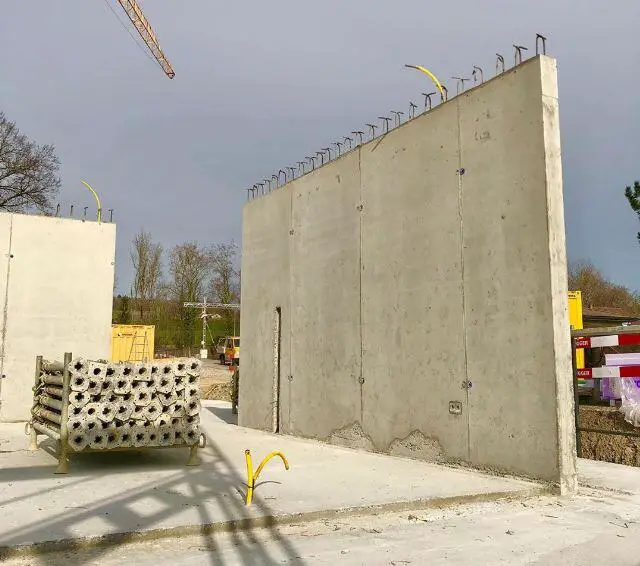




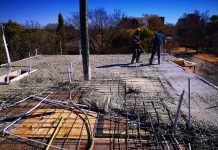




Keep up the great work, God’s grace.